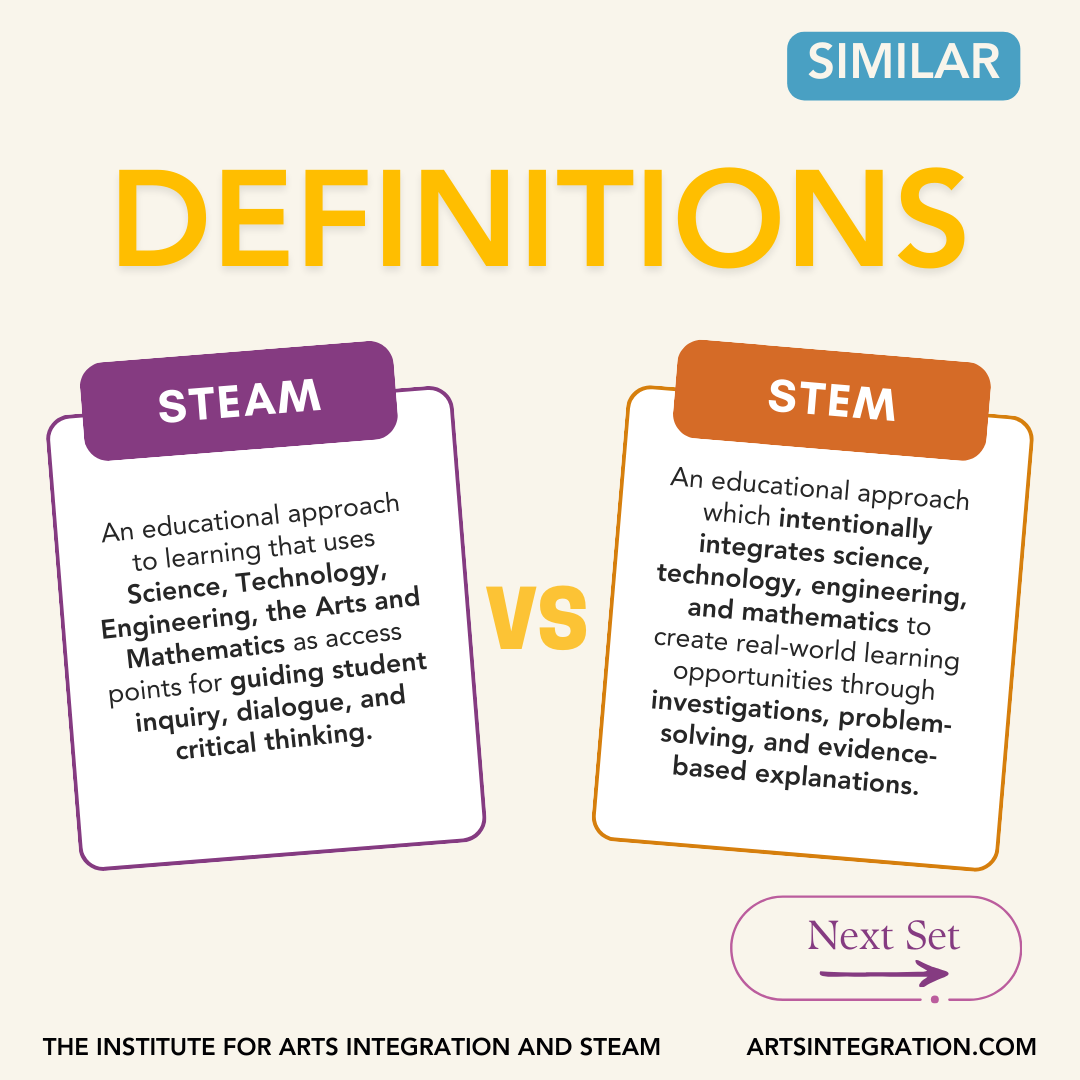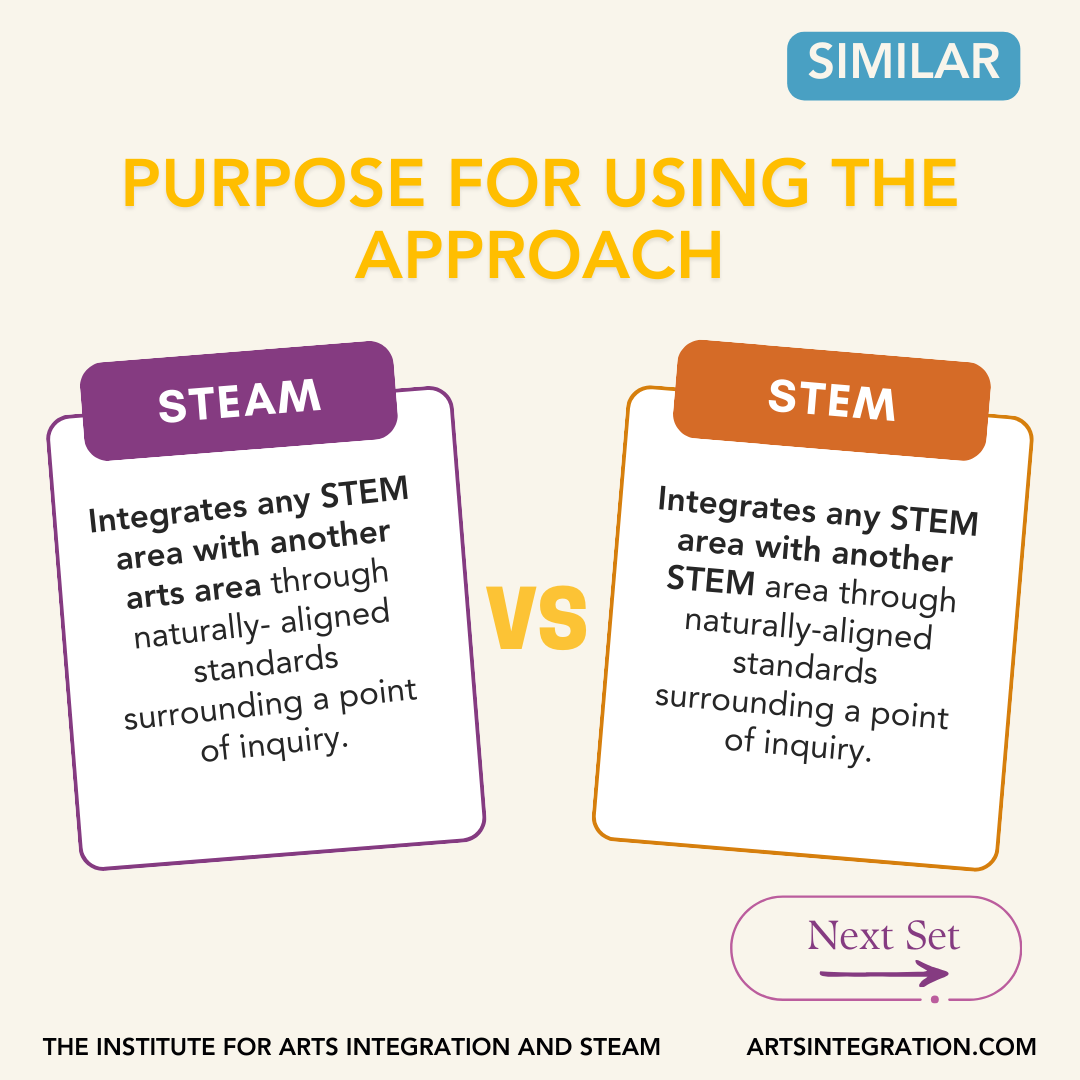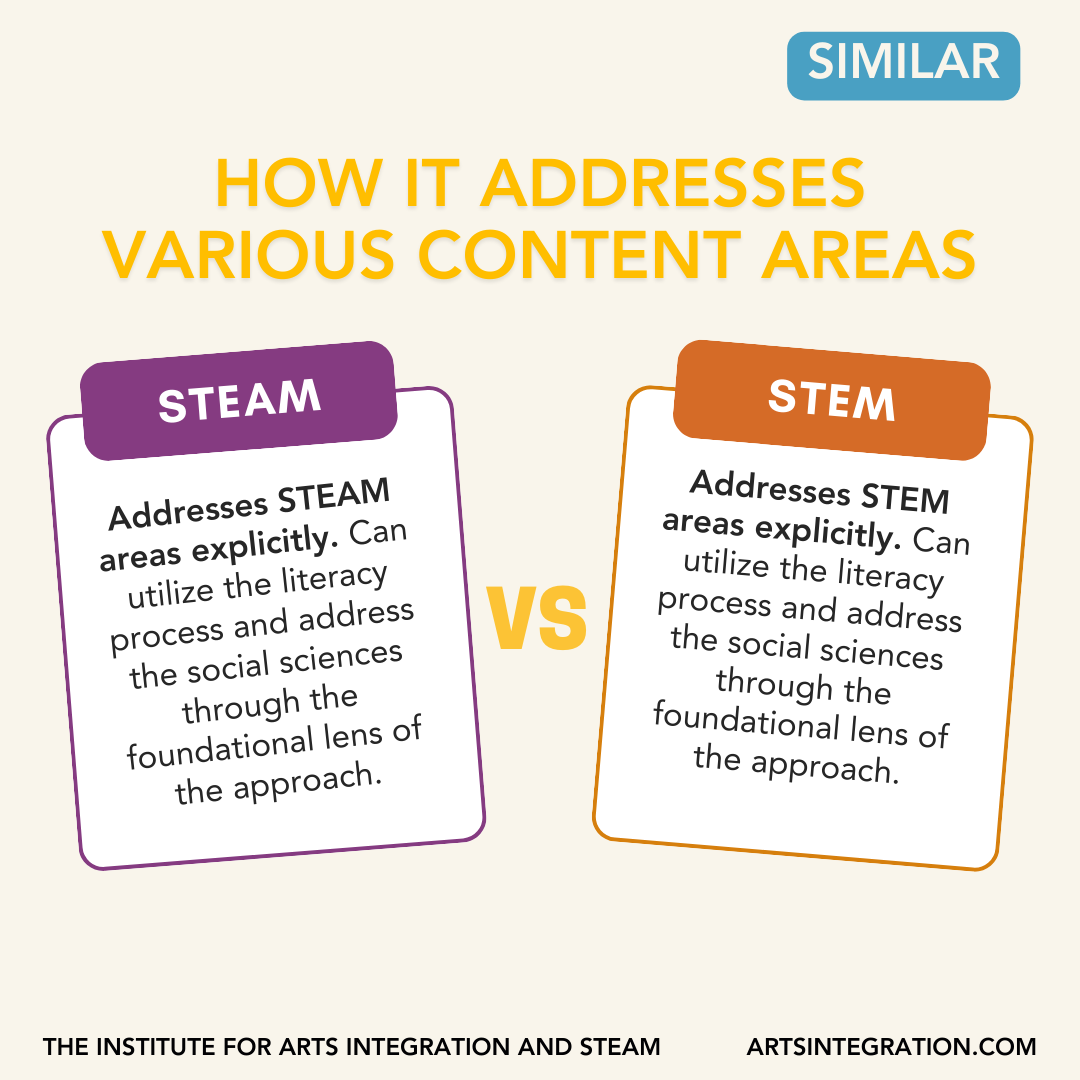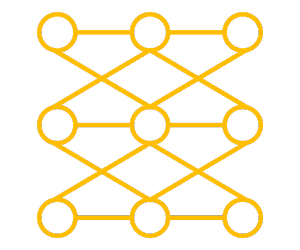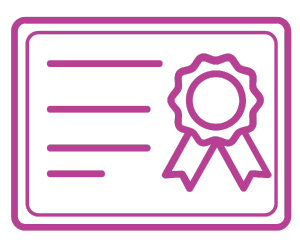Using STEAM education results in students who take thoughtful risks, engage in experiential learning, persist in problem-solving, embrace collaboration, and work through the creative process. These are the innovators, educators, leaders, and learners of the 21st century! This comprehensive article will help you understand the keys to a meaningful STEAM effort.
Why is STEAM Education Important?
For far too long in education, we’ve been working with the presumption of teaching to ensure our students get a “good job”. But what does that look like? We are preparing students for jobs that don’t even exist.
We are at a point where it is not only possible, but imperative that we facilitate learning environments that are fluid, dynamic, and relevant. None of us go outside and look at a tree and say, “that’s a tree, so that’s science” or, “the sky is blue, so that’s art.”
Our world is a beautiful, complex, and intricate tapestry of learning all in its own right. Why do we believe that we have the ability or the right to box it in behind brick walls and classroom doors in a place called school?
Integrating concepts, topics, standards and assessments is a powerful way to disrupt the typical course of events for our students and to help change the merry-go-round of “school.”
It takes what we do when we open the doors to the real world and places those same practices in our cycles of teaching and learning. So we can finally remove the brick walls and classroom doors to get at the heart of learning.
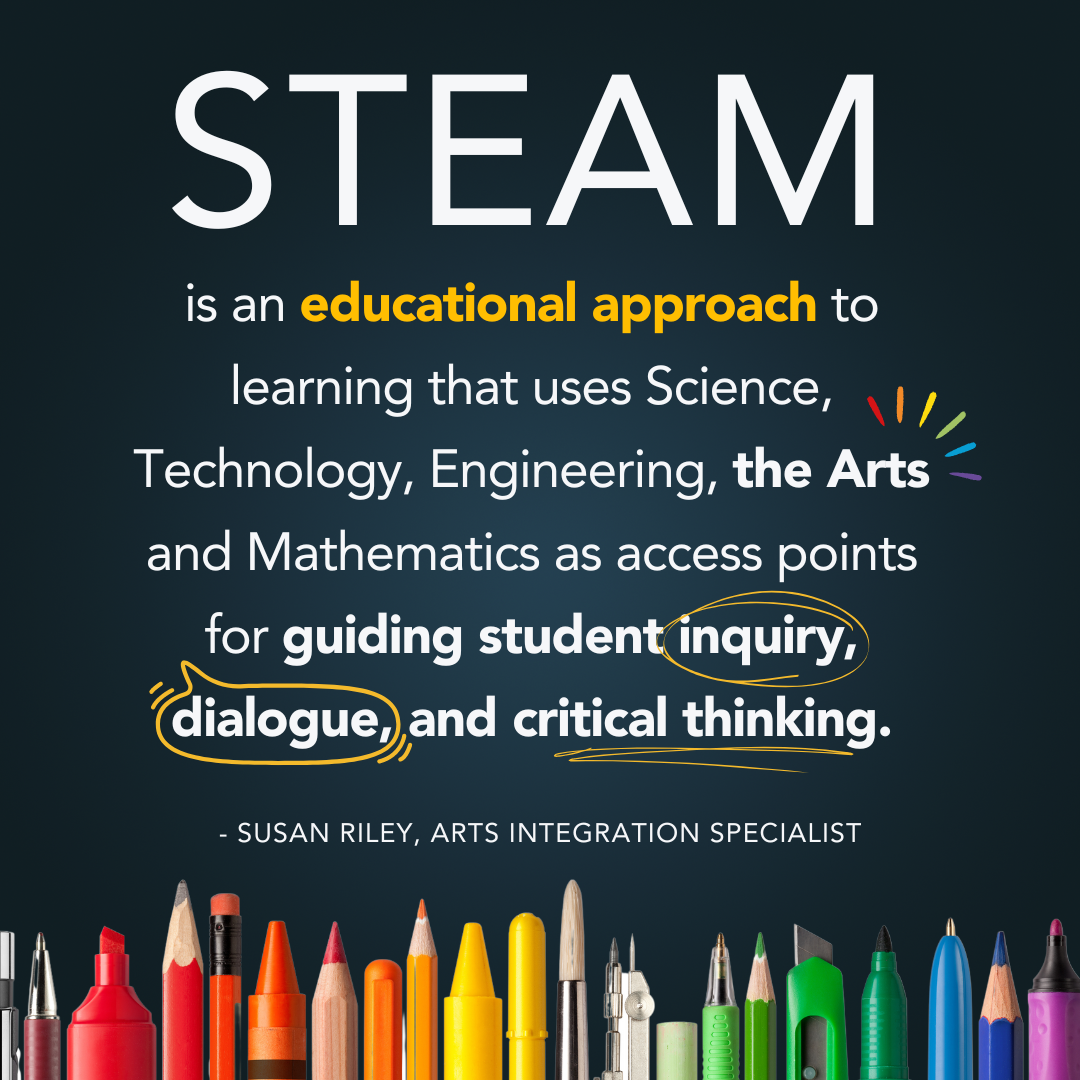
STEM vs. STEAM
The STEM to STEAM movement has been taking root over the past several years and is surging forward as a positive mode of action to truly meet the needs of a 21st century economy. STEM alone misses several key components that many employers, educators, and parents have voiced as critical for our children to thrive in the present and rapidly approaching future.
Much has been proclaimed about the need for more STEM “programs” in our schools. The logic is simple: the wave of future economic prosperity lies in a workforce that is well-versed in rising job markets like science, technology, engineering and math. Thus, there has been an increased investment in STEM initiatives in schools. This includes (but is not limited to):
- providing mobile devices for students (sometimes in the forms of computer labs, and other times in the form of 1:1 – a single device for each student)
- after-school STEM clubs or programs
- STEM curriculum, where projects using STEM practices are embedded
- BYOD initiatives (bring your own device)
- STEM days to encourage hands-on exploration within each of these disciplines
- robotics programs
While these initiatives are a wonderful start into the exploration of these four areas of study, the critical process of creativity and innovation is missing. Students in STEM programs may have more experiential learning opportunities, but they are limited to only science, technology, engineering and math. Our economy requires so much more than an understanding of these areas – it requires application, creation and ingenuity. STEM alone does not foster these essential nutrients.
STEAM is a way to take the benefits of STEM and complete the package by integrating these principles in and through the arts. STEAM takes STEM to the next level: it allows students to connect their learning in these critical areas together with arts practices, elements, design principles, and standards to provide the whole pallet of learning at their disposal. STEAM removes limitations and replaces them with wonder, critique, inquiry, and innovation.
The STEAM Model
The pathway to STEAM is exciting, but can also be dangerous without an understanding of what STEAM truly means in both its intention and its implementation. Like its STEM predecessor, STEAM can stop short of its best manifestation without several core components:
- STEAM is an integrated approach to learning which requires an intentional connection between standards, assessments and lesson design/implementation
- True STEAM experiences involve two or more standards from Science, Technology, Engineering, Math and the Arts to be taught AND assessed in and through each other
- Inquiry, collaboration, and an emphasis on process-based learning are at the heart of the STEAM approach
- Utilizing and leveraging the integrity of the arts themselves is essential to an authentic STEAM initiative
How to Use STEAM: Process and Product
There are actually 6 steps to creating a STEAM-Centered classroom, no matter what area you teach. In each step, you’re working through both the content and the arts standards to address a central problem or essential question.
What’s great about this process is that you can as easily use it to help plan for a lesson as you can to facilitate the actual learning process in your STEAM classroom. Let’s take a look at each step.
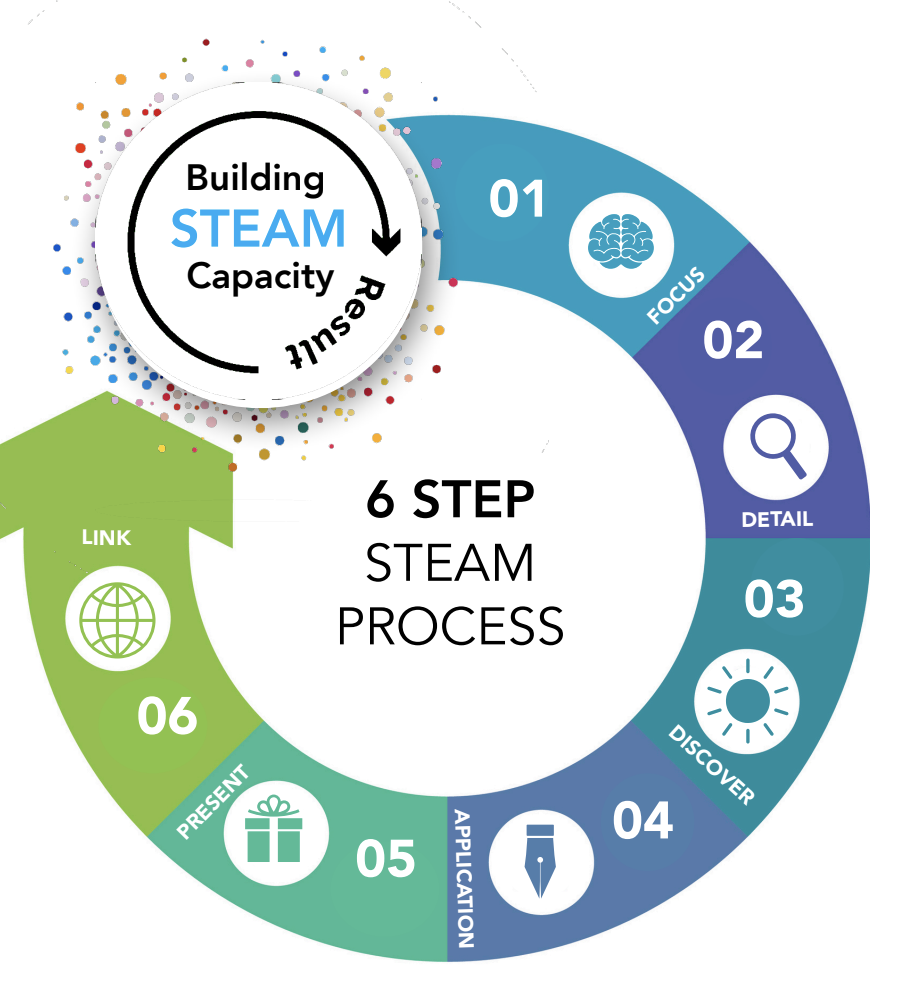
1. Focus
In this step, we’re selecting an essential question to answer or problem to solve. It’s important to have a clear focus on both how this question or problem relates to the STEM and the Arts content areas you’ve chosen.
2. Detail
During the detail phase, you’re looking for the elements that are contributing to the problem or question. When you’re observing the correlations to other areas or why the problem exists, you begin to unearth a lot of key background information, skills or processes that students already have to address the question.
3. Discovery
Discovery is all about active research and intentional teaching. In this step, students are researching current solutions, as well as what ISN’T working based on the solutions that already exist. As a teacher, you can use this stage to both analyze the gaps your students may have in a skill or process and to teach those skills or processes explicitly.
4. Application
This is where the fun happens! After students have dived deep into a problem or question and have analyzed current solutions as well as what still needs addressed, they can begin to create their own solution or composition to the problem. This is where they use the skills, processes and knowledge that were taught in the discovery stage and put them to work.
5. Presentation
Once students have created their solution or composition, it’s time to share it. It’s important that the work is presented for feedback and as a way for expression based on a student’s own perspective surrounding the question or problem at hand. This is also an important opportunity to facilitate feedback and help students learn how to give and receive input.
6. Link
This step is what closes the loop. Students have a chance to reflect on the feedback that was shared and on their own process and skills. Based on that reflection, students are able to revise their work as needed and to produce an even better solution.
Connecting STEAM and Literacy
STEAM’s foundations lie in inquiry, critical thinking, and process-based learning. That is extremely important. The entire idea surrounding STEAM lessons and the STEAM approach is that it’s based around questioning, and really deep questioning. We want to start asking non-Googleable questions.
Inquiry, curiosity, being able to find solutions to a problem, and being creative in the finding of the solutions is at the heart of this approach. This means that the humanities are woven into STEAM just like everything else.
Using STEAM does not mean letting english language arts or social studies go to the wayside.
You can use a STEAM lesson with those ideas, because it’s fundamentally built upon asking really good questions, and then seeking solutions to the problems that are presented in those content areas.
That doesn’t have to just happen in the STEM areas, or in the arts areas with STEM; you can connect all of the humanities through STEAM through the idea that you’re looking for a solution to a very specific problem which comes out of the inquiry process.
But this begs the question: if STEAM stands for Science, Technology, Engineering, the Arts and Math, what happens to reading and writing? Do we just drop them completely, or do we move to something else and call it STREAM (adding “reading” into the acronym)? And then… aren’t we back to teaching everything?
These are excellent questions. The answers come down to two deep understandings →
STEAM and Literacy Strategies
With those understandings in mind, there are many ways to integrate literacy and STEAM intentionally in your classroom. Here are some examples that you may find helpful in your planning for this year.
Visual Thinking
Utilizing visual thinking is drawing upon the foundation of literacy itself. You can read a piece of art or music, the same way you can read a piece of traditional text. Visual thinking strategies are a terrific way to introduce this concept to your students and to practice literacy across all content areas.
A well-known VTS is looking at a piece of text (arts, fiction, informational, etc) and asking these three questions:
- What’s going on in this text/image/process?
- What do you see/hear that makes you say that?
- What more can we find?
The foundation to visual thinking is in the questions that are asked and in listening to student responses. These are also the hallmarks of STEAM, so visual thinking and literacy makes sense.
Here are some additional Visual Thinking resources to help you get started:
OpenThink: Visual Thinking Strategies
10 Visual Thinking Literacy Strategies
The Visual Thinking Strategies Website
Embodying Text
Being able to make personal meaning requires moving from the abstract to the literal. Many of the STEM areas deal with abstract concepts which are hard to visualize or feel. This can be done quickly and easily through movement. Using dance as a tool to explore a concept and then translate that into a literal interpretation is a form of writing. Just because it’s done with the body doesn’t make it any less of a composition.
Here are some specific strategies that use dance composition as a medium for STEAM:
Reciprocal Teaching
Reciprocal teaching is all about using comprehension strategies to have formal conversations about text. If the text is a piece of art, or if it’s a scientific finding, the reciprocal teaching strategy will work regardless of content. Here’s the steps you need:
- Predict
- Question
- Clarify
- Summarize
Start by asking students to predict an outcome based on a problem, process, or artistic prompt. Then, ask some guiding questions and encourage your students to ask each other questions about the work. Students can then point out elements of the problem, process, or arts prompt that they don’t understand. They can then research answers to these questions and summarize their findings. This strategy is often used to analyze traditional text and is a core component of literacy, but can easily be applied to any content area.
5 Best Practices for Connecting STEAM with Special Education
Special Education students oftentimes go to intervention classes in place of arts classes (technology, art, music, etc). The same also applies to students performing below grade-level in math and reading. This can mean a missed opportunity for engaging these students in a meaningful way.
What to Look for in STEAM Lessons and Schools
When it comes to using STEAM in the classroom, how do you know what you should look for in outcomes for students, teachers and lessons? It’s one thing to design a lesson, but it’s totally different to see STEAM in practice.
The practice is one of the most exciting things about using the approach. During these lessons, students engage on a totally different level and often produce work that is much more vigorous. But in any active classroom, it’s easy to confuse activity with deep learning.
STEAM OUTCOMES
The best way to ensure that your lessons are authentic to the STEAM process is with a simple look-for list. We have one developed for arts integration look-fors, but STEAM is a bit different. It has a different focus and intention that arts integration. So it also requires a slightly different list of outcomes. Let’s dive into each component below.
INTENTIONAL CONNECTIONS
Similar to arts integration, the best quality STEAM lessons intentionally connect 2 aligned standards. The first two components of this list break this down a bit. We want to make sure we purposefully select standards, content areas and topics that make sense together. The easiest way to do this is through seeking similar verbs across standards.
For example, if the science standard asks students to “demonstrate” something and the art standard asks students to “apply” their skills, this can be an indicator of a possible alignment. It’s not a hard and fast rule, but it definitely helps to eliminate standards that won’t work together and leave us with the best options available.
INQUIRY BASED
Any good STEAM lesson is grounded in inquiry, problem-solving and process-based learning. In fact, this is one of the distinguishing characteristics between Arts Integration and STEAM. So when viewing STEAM in the classroom, you want to pay close attention to the essential question and the process surrounding its exploration.
What problems are being investigated and solved? How are both contents being used to explore the problems? Why is the process important to the question posed? These are all important components to a STEAM classroom or lesson.
INTEGRITY
Whenever a STEAM lesson is being used, it’s imperative that the arts content has been selected purposefully and that it’s being taught with integrity and not in service of the other content. This is a non-negotiable.
Many times, we’ll see lessons where students are creating a craft at the end of the lesson and educators call it “STEAM”. Things like creating a shadow-box about the planets for a science lesson or painting a derby car that was built in an engineering unit.
Simply adding paint, tape and glue doesn’t make it a STEAM lesson. That diminishes the deep process-based learning that is inherent to the arts. Instead, the lesson should be actively teaching the arts standard through application of skills students have learned during dedicated arts times.
21st CENTURY SKILLS
The 4Cs of 21st century skills – Collaboration, Creativity, Critical Thinking and Communication – aren’t going anywhere. They are a critical component to student success in a rapidly changing workforce and society. Luckily, these are easily woven into any quality STEAM lesson. This is where the active engagement really starts to shine with student groups, creating original solutions and compositions and exploring questions from multiple perspectives.
EQUITABLE ASSESSMENT
Finally, a true STEAM lesson requires assessing both the content and arts standards that were selected and taught. As all good teachers know, if you teach it – you assess it. But remember that assessment is not the same as evaluation. Assessment is a measurement of growth, not a judgment of mastery. So in a STEAM lesson, you’re looking for student growth in both content areas from the lesson. If you need support in how to do this, or examples of maker-based assessments, definitely check out our Checking for Understanding online course.
BONUS: MAKING MEANING
Making meaningful connections isn’t really a bonus. It’s wrapped around the whole lesson like a warm coat. Making connections to career pathways and real-world applications is a way for students to understand that what they’re doing in the STEAM classroom matters. It’s not just “playing” – what they’re learning, creating and applying has real possibilities and opportunities.
USING THIS LIST
The great thing about a list of look-fors like this is the ability to use it for many different reasons. If you’re a teacher, use this list as a way to tighten up your STEAM lesson development and implementation. If you’re an administrator, use this as a checklist during a STEAM lesson observation. Or use it as a way to make sure you’re on the right track towards becoming a STEAM Teacher or STEAM School. No matter what, these 7 basic outcomes will help take your students to the next level.
Becoming a STEAM Teacher
As more schools are shifting to include a STEAM approach, there’s a general question that many start to ask: Who are the STEAM teachers? Then, of course, we start to explore follow up questions like:
- When does STEAM occur? Is it a class or is it throughout the day?
- What makes a person qualified to teach STEAM?
- Are there STEAM credentials?
- Do we just transform STEM teachers into STEAM teachers?
- Is STEAM reserved for the art class? Does that mean we need to reconfigure art time?
Once you head down this path, you start to see all of the forks in the road. These can lead you down a totally different journey than what you originally anticipated. Let’s explore each of these variations to get some clarity around an expanding and evolving approach.
Who teaches STEAM?
The answer to this is one is easy: everyone. Everyone in a school has the capacity to be a STEAM teacher. It’s not limited to just the art teacher or just the science teacher. It’s everyone.
This can seem oversimplified, but honestly, it’s an inherent quality of this approach. STEAM, like it’s counterparts STEM and Arts Integration, is based on a foundation of integration. We’re trying to look at these areas of science, technology, engineering, the arts and math in tandem, rather than apart.
By limiting or labeling someone as the “STEAM Teacher”, you’re cutting out the very heart of this idea. We’re all STEAM teachers.
This goes back to the idea of “it’s not my job to teach that”. We’ve all heard people say some version of this:
“It’s not my job to teach those kindergarteners to tie their shoes.”
“It’s not my job to explain basic math functions to these kids.”
“It’s not my job to show my students how to hold a paintbrush”.
Guess what? It IS your job. It’s all of our jobs. We are a community and we all help each other. That’s how communities work. What benefits students, benefits us all.
With that in mind, if the opportunity is there to teach a STEAM lesson, take it! No one teacher has ownership of an approach. We’re all in this together.
When does STEAM occur?
This question ties back to our first one. If everyone is a STEAM teacher, that means that STEAM can happen everywhere at anytime. It’s not limited to a specific STEAM class.
What if your school has a dedicated STEAM time or course? That’s okay! There’s nothing wrong with that. This is usually a first step that schools take to ensure that there is time built in for STEAM. Also, many schools just don’t know where to start. So they appoint a STEAM teacher to become the expert for the building.
Again, this isn’t wrong – it’s just not the only part of the process. You can’t just put a STEAM class in place and call yourself a STEAM school. It’s not just one person’s job to “teach STEAM”.
This is an approach, not a scripted curriculum. STEAM is meant to encourage curiosity, ask big questions and provoke creativity in the exploration of problem-solving. Everyone can be a part of that in every class.
STEAM occurs throughout the day. It’s embedded as an approach to use when it’s appropriate and a natural fit for the intent of the learning opportunity. That means you can integrate STEAM into your math class, your music class, your field day – anything.
This is something that is woven into the fabric of our school culture. It’s just “how we do things”. But that also means, this comes with some responsibilities.
What makes a person qualified to teach STEAM?
Just because everyone can teach through STEAM, doesn’t mean that they can immediately do so with integrity. In fact, most teachers aren’t sure of what STEAM really is, so how can they teach it effectively?
As with most approaches in education, we need to ensure that our teachers receive high-quality professional development before implementation. There are plenty of options available, including STEAM conferences and courses. Whichever you choose, just be sure that teachers have the ability to learn more about how this approach works and how to use it in their classrooms.
Since STEAM is an approach, teachers need to understand how to align curricular standards, create integrated assessments, develop lessons that ensure both the arts and the STEM areas are taught with integrity, and specific strategies that can be used with students.
This isn’t just a step-by-step curriculum or a place to house a maker space or 3D printing lab. STEAM is so much more than that, and you need to have teachers trained in how to use it. So no matter what option you choose, get everyone on your team some training to ensure the best opportunity for success.
Are there STEAM credentials?
This is an evolving approach which means that we’re all actively learning and researching the best possible implementations. Many institutions are now beginning to offer STEAM certificates or STEAM-focused graduate programs. These can be a great option for teachers who want to do a deep dive study. You might want to consider programs like:
University of San Diego’s STEAM Master’s Degree
Concordia University’s STEAM Master’s Degree
Many other institutions offer courses in STEAM, though not a full degree. And of course, our Institute offers an online Arts Integration Specialist Certificate which also deeply addresses STEAM.
The only word of caution here is to keep in mind that everyone in your school is a part of STEAM. So you’ll want everyone to have at least a baseline of knowledge and understanding in the approach. This can include teacher-led PD days or even school-wide attendance at an online conference or course.
Do we just transform STEM teachers into STEAM teachers?
In an effort to evolve schools into 21st century learning hubs, many have chosen to simply rename their STEM teachers as STEAM teachers. This unfortunately does a disservice to both the teachers and the approach.
Often, this switch comes without any training. The STEM area teachers are not equipped with an understanding of what makes STEAM different than STEM. So they continue to teach their content the way they’ve always done, with a new STEAM challenge thrown in here or there.
This is also tied to the release of funding due to the updated ESSA law in 2015. This allowed schools to receive funds if they chose to integrate the arts. Many schools added this to their improvement plans without a true knowledge of what it really takes to weave STEAM in and through a learning pathway. Instead, they asked STEM teachers to become STEAM teachers and add in the arts to their current curriculum.
However, it’s important to note that neither STEM nor STEAM can happen without direct instruction of those individual skills/concepts. You can’t teach a STEM or STEAM lesson connecting two areas if students haven’t learned the skills in each area directly.
For example, if you want to connect parabolas and action art making, you can’t do that unless students already know what a parabola is and the specific techniques that artists use to create action art. You need to teach each of these things individually first.
That means that we only use STEAM when it’s appropriate – not all the time. Those science, math, technology and engineering classes need to focus on teaching those skills first. Only then can we intentionally provide a STEAM lesson that puts it all together.
Is STEAM reserved for the art class?
If all this is true, then surely STEAM becomes something that happens just in the arts classes, right? Wrong. STEAM isn’t something we just stick somewhere. We don’t reconfigure an entire arts class to become a STEAM class.
Just like in the STEM areas, in order for STEAM to occur, students also need to have direct instruction in the arts skills and processes. STEAM cannot happen if students haven’t explored arts techniques, master artists and composers, and the critical arts skills for creating, responding, performing/presenting and connecting.
Can STEAM lessons happen in the art or music room? Sure! But they can also happen in the math or science room.
Final Notes
STEAM is not about what, where or when – it’s about why and how. STEAM is a process of application. It allows our students to create meaning for themselves and others.
If we’re going to reconfigure anything, it should be our intentions for what we teach and how we can provide more time for application, creation and evaluation. That can occur in any class with any teacher.
This approach to learning is certainly not an easy task, but the benefits to students and the entire school community are tremendous. Students and teachers engaged in STEAM make more real-life connections so that school is not a place where you go to learn but instead becomes the entire experience of learning itself. We are always learning, always growing, always experimenting.
School doesn’t have to be a place, but rather a frame of mind that uses the Arts as a lever to explosive growth, social-emotional connections, and the foundation for the innovators of tomorrow…today!
Here’s How We Can Help
So…are you ready to take the next step on your STEAM journey? There’s a lot of possibilities based on your unique vision, background, and constraints.
For example, you may need assistance with building buy-in among staff, figuring out a system for collaborative planning that doesn’t require more time, or perhaps simply a set of strategies to get started.
Here’s how we can support you moving forward:
Learn how to successfully integrate the arts in any classroom.
Join 65,000+ K-12 educators receiving creative inspiration, free tools, and practical tips once per month in the SmART Ideas Digest.

SUPPORT
The Institute for Arts Integration & STEAM
PO Box 2622
Westminster, MD 21158
Main: 443-821-1089
Sales: 443-293-5851
Help Center
Email Us
Copyright 2010-2024 The Vision Board, LLC | All Rights Reserved



